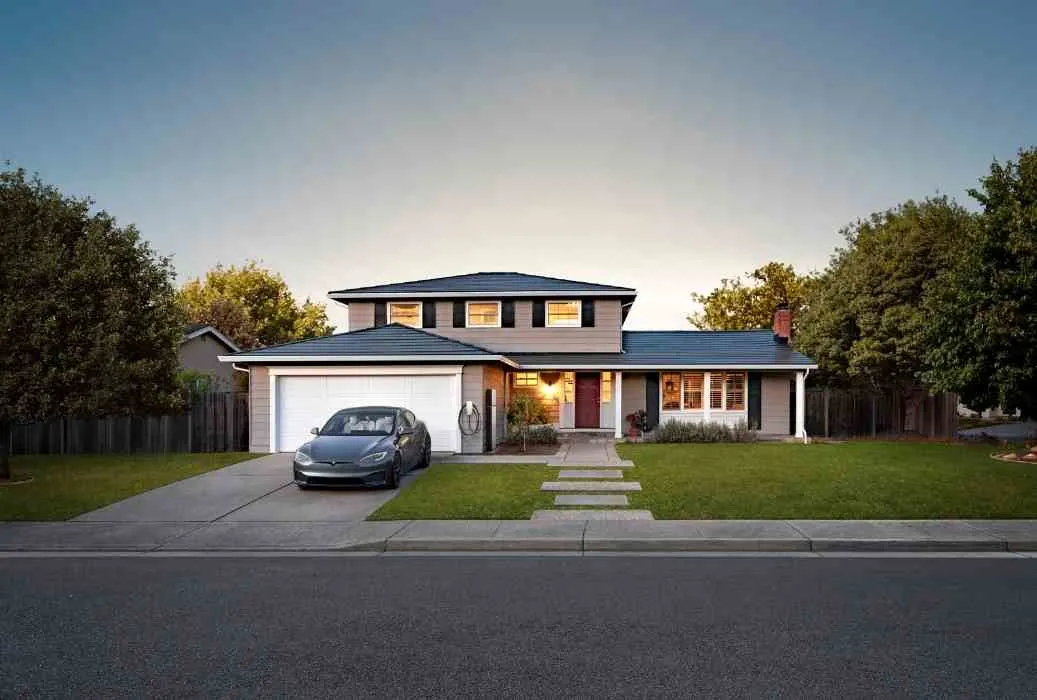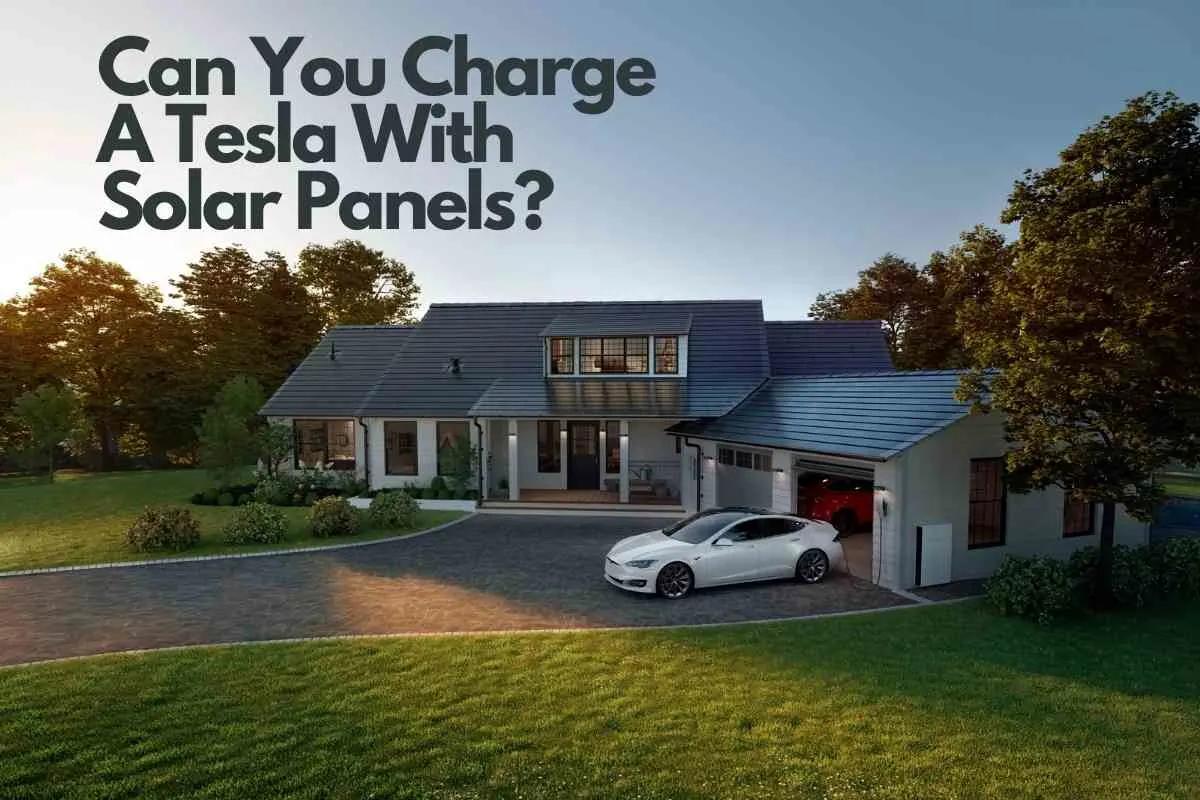If you own a Tesla, you’re probably an environmentally conscious person. After all, the all-electric Tesla is one of the best ways to reduce your own individual carbon footprint.
If you’ve made other investments into clean energy, like solar panels, you may be wondering if you can combine these two resources and use your solar panels to charge your Tesla.
However, can solar panels actually charge up a Tesla?
A Tesla can in fact be charged using solar panels. Once a home is equipped with five solar panels, an inverter, and an EV charger, a Tesla can be charged all the way up to a 40-mile range.
Now that we’ve determined solar panels can be used to charge a Tesla, we’ll look more into its convenience, cost, and other related areas that will be important to Tesla owners who want to truly go green.
How Many Solar Panels Does it Take to Charge a Tesla?
To charge a Tesla so that it has a minimum 40-mile range, only five solar panels at a home will be needed.
Though some homeowners can be concerned that using their home’s solar panels to charge up their Tesla will sacrifice energy needed for appliances and other items, this is not true.
Since solar energy is renewable energy, having enough power to charge the Tesla and keep everything running in a home is not a problem.
Also, just like the Tesla, solar panels come with warranties that guarantee they will last for many years.
On average, solar panels installed on a home will last a minimum of 25 years, meaning they will provide an abundant supply of energy for a Tesla.

Once a home has solar panels, many people who own a Tesla wonder if they will also need a home solar battery so that they can store the energy needed to charge their Tesla.
In most cases, this is neither practical nor necessary.
Since the car’s battery will rarely need to be fully charged in one session, a solar battery will not be needed.
To demonstrate this, let’s look at the Tesla Model 3.
With variations of the car having batteries between 54-82 kWh, a home would need up to six Powerwalls so that enough energy would be stored for the car’s battery.
Costing at least $30,000 or more, this would be a cost incurred in addition to the car itself and the installation of the home’s solar panels.
Another reason to not need a solar battery is the net metering benefits Tesla owners usually receive for having an electric vehicle.
By earning credit for the extra solar energy that makes its way to the grid during daylight hours, there is thus more energy to draw from when charging the Tesla at night.
Thus, net metering has the grid acting as the “battery.”
How Long Does it Take to Charge a Tesla with Solar Panels?
When a Tesla is being charged using solar panels, it is likely to take longer than it does when being charged at a Supercharger station or at home using standard electricity.
On average, it can take up to 40 hours to get a Tesla completely charged if you are relying on portable solar panels.
One aspect of solar energy that has us intrigued is the use of the solar trailer on Tesla Model 3 vehicles.
Offering the advantage of being able to drive nonstop while the vehicle continuously charges as it drives, stopping at a charging station may not be necessary.
However, due to the solar trailer’s extra weight, the Tesla’s range would be reduced, making it more likely a visit to a charging station might be necessary.
When charging a Tesla at home, charging times decrease dramatically.
Since residential solar panels have much greater energy outputs than do portable panels, drawing energy from only five panels at one’s home can mean a Tesla could go from 0% to 100% fully charged in as little as seven hours.
However, this can vary depending upon weather conditions, the car’s battery, and other factors.

Can You Charge a Tesla with Portable Solar Panels?
Having touched on this topic at several points along the way, we have determined that it is possible to charge a Tesla using only portable solar panels.
But as it’s been demonstrated, doing so may limit the range a Tesla could have for a trip.
As a result, while charging with portable solar panels may be good enough to start the trip, chances are the panels will not provide enough power to the Tesla to avoid the need to stop at a charging station.
When considering this option, practicality as well as expense will come into play.
Based on various calculations, we have seen estimates of it taking as many as 75 portable solar panels to accomplish what only a fraction of full-sized residential solar panels can do in charging a Tesla.
At an average price of $200 per panel, this could lead to spending a minimum of $15,000 just for the portable panels themselves.
When other costs for an inverter, cables and a trailer for the panels are added in, the final tally will probably be more than $20,000.
Though using portable solar panels can give Tesla drivers the advantage of potentially not needing access to a charging station while on the road, we feel it makes more sense to spend $20,000 on a residential solar panel system.
Since they can store far more energy and have a higher output, the Tesla can get fully charged in a matter of hours and have an extended range for travel.
Can a Tesla be Solar Powered?
For many owners of electric vehicles like Tesla, the question of why these vehicles aren’t simply equipped with solar panels on their roofs always seems to come up from time to time.
Though Tesla vehicles can be easily powered using solar energy, having solar panels on their roofs has been deemed to not be a practical option.
To begin with, most vehicles only have anywhere from 10-25 square feet of space on their roof.
While this sounds like quite a bit, consider that a 10 square-foot solar panel can produce 50 watts of energy when exposed to direct sunlight.
However, this energy output is only the equivalent of one lightbulb, meaning the vehicle would only have a range of one to three miles.
Should a vehicle have a maximum range of 300 miles, the limited number of solar panels that could be placed on the vehicle would mean it would need up to 90 hours of direct sunlight to gain enough energy to meet its maximum range capabilities.
For Tesla owners who want to rely on solar power for their vehicles, we recommend examining Tesla solar panels designed for installation on a home’s roof.
Highly efficient and able to be installed on both standard and complex roofs, they are powered by a Tesla Solar Inverter, meaning the energy system is completely integrated and fully compatible with Tesla vehicles.
Along with its current line of cars, Tesla is planning to launch many other vehicles that can be powered using solar energy, including trucks and minivans.
In addition, the company is planning to create numerous charging stations around the world that rely solely on solar energy.
Should a solar energy system already be in place at a Tesla owner’s home, we feel having a wall-mounted charging station is perfect for the Tesla Model 3.
These charging units, which feature a 24-foot cable for easy charging, will continue to grow in popularity.
Expected to become a more relied-upon clean energy source in the years ahead, solar power appears to be the future for Tesla vehicles.
